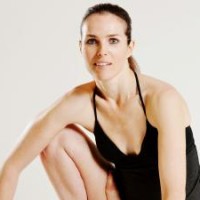“Strength cannot be built from the muscles alone.” ~ Yogacharya
“Even if you start doing push-ups it will not help,” said Yogacharya Venkaesha to a student struggling with an arm posture.
My teacher Yogacharya—a yoga therapist and expert in backbends—is known in Mysore for verbally leading students in their practice without attempting physical adjustments. When it comes to his instructions, he hits the nail on the head. It’s as if he can read your mind.
Pattabhi Jois (often called Guruji) once told me I had “no strength”. I didn’t like that. In fact, it bothered me enough that I started to do push-ups. I did them until I collapsed on the floor, exhausted.
Like many people, I wanted to grow stronger, and as a woman the desire was intense. Looking around the practice room in Mysore, I knew when compared to the male practitioners, I wasn’t quite as strong, and I made myself feel better by commenting on my flexibility. But how was I to build strength?
Certainly many of the arm balance postures we find in yoga are difficult in terms of physical tenacity.
When I began regularly studying under Yogachaya he inquired about my practice. He asked how many hours I spent practicing, reading, meditating, and chanting. When I told him I did push-ups, he gave me a painful (almost dirty) look. Then he laughed.
Keeping in mind that the practice of yoga is not just physical but mental training as well, my practice probably looked pretty silly from my teacher’s eyes. It is relatively easy to do the physical part, and extremely easy to forget about the ultimate purpose—to still the mind.
In Sanskrit sthita-prajna means steadiness of thought. Developing ways to steady and strengthen the mind however, is not always as straightforward as it seems. I have found that the best way to do this is to stick to one variation at a time.
For several years I studied a particular discipline without deviation. From Sivananda Yoga to the primary series of Ashtanga Yoga, I practiced from start to finish with little room for improvisations, mixing, or skipping whatever I wanted. When I started studying AtmaVikasa Yoga—the evolution of the soul created by Yogacharya—I practiced with the same vigor.
From this fertile ground I grew the ability to trouble-shoot the problems that I encountered along the way. To develop an advanced posture, like padma mayurasana (lotus peacock), I had a fundamental practice from which to draw upon.
Originally my knees did not bend in lotus, my back did not melt into wheel, and my arms could not lift me into a handstand.
First came lotus or padma, and I worked through all of it’s forms (sitting, lying flat and upside-down). When I practiced under Pattabi Jois in Mysore he watched through all of my painful moments, bending my knees and going into gardha pindasana (the fetus pose). Every day Guruji looked on in silence, letting me do the practice without interfering.
Sharath, Pattabhi Jois’s grandson, who at the time helped only the senior students, encouraged me when he demonstrated how his knee moved out of its joint. He even said it had been “restructured”.
The real awakening however, did not happen when my legs folded neatly into lotus, but rather when I discovered the connection of where I was blocked internally. That single moment opened a gateway in deepening my practice.
Meanwhile, I was also developing my practice in arm strengthening postures—no push-ups to help me get there. Speaking from experience, push-ups do not work. I was just burning off excess energy. I actually concluded later that they are better for developing stomach strength.
Arm postures require balance, control, and an unwavering ability to focus, with strength being a very small component.
My practice ranged from simple to very basic for a long time. One of the mistakes that most people make is thinking that a complicated posture is somehow more effective. As a tip to improve your practice start with the basics. By basic I am talking about simple poses that you may mistakenly think have nothing to teach you.
Try simple posture like the plank and hold it for 1-2 minutes. It quickly becomes apparent that this so-called simple posture has a lot to offer.
Essentially every posture I have ever practiced has been a deeper training in conquering fear, doubt, and the tamas (inertia) aspect of the mind. I consider them more mental than physical feats.
All of the more advanced postures that I began practicing stemmed from hours of being in simple ones, with attention to breath, alignment, and concentration. I have my teacher Yogacharya to thank for this.
Determine where your strengths and weaknesses lie. Consider what postures you like, and those you would avoid. Commit to practicing one of the former and two of the latter. Take notes and remember, yoga is a journey.
Hopefully you have a teacher who inspires you to think beyond conventional methods—like doing push-ups. You might feel like you are taking the long way home, but you’ll definitely get there.
For more by Heather Morton, please see:
>Myth: Your teacher is going to give you the answers.
>Eight things you should know about backbends.
~
Editor: Jennifer Cusano
Please like elephant Yoga on Facebook.











Read 13 comments and reply